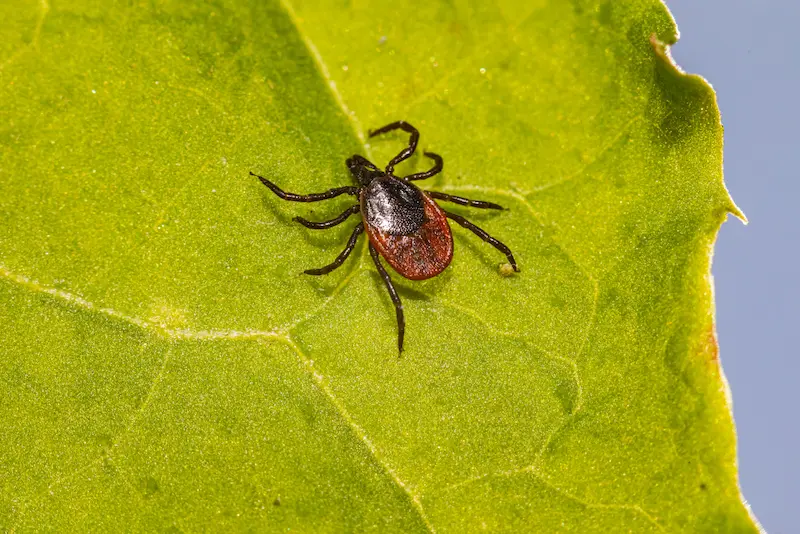Table of Contents
Home remodeling can be an exciting and transformative process. Whether it’s a kitchen upgrade or a total home renovation, refreshing your living space is thrilling. However, many homeowners don’t realize that remodeling can inadvertently invite unwelcome guests—like fleas and ticks—into their homes. These tiny pests can be a nuisance and pose health risks to you and your pets. Understanding how remodeling can attract fleas and ticks and knowing what to do about it is critical to preventing an infestation from disrupting your dream home makeover.
The Disturbance of Habitats During Remodeling
During a remodeling project, activities like tearing down walls or working on landscaping can disturb the natural habitats of fleas and ticks. These pests, usually found in tall grass, debris, or cracks near your home’s foundation, are forced out of their hiding spots and often end up inside your house.
Also, remodeling can displace wildlife like rodents carrying fleas and ticks. These animals may seek shelter in your home, bringing pests and leading to an infestation. The disturbance of their habitats and new entry points make your home an attractive target for fleas and ticks.
Bringing In Infected Materials
Another way remodeling can invite fleas and ticks is by introducing infected materials. Many homeowners or contractors unknowingly bring furniture, wood, or other materials that harbor fleas or flea eggs. Ticks can easily hitch a ride on lumber, outdoor furniture, or construction tools, making their way into your home without detection. These pests can hide in the cracks of new materials, waiting for the right conditions to thrive.
Flea eggs, in particular, can lie dormant for months, waiting for a warm environment to hatch. Once they do, they can quickly spread throughout your home, affecting both pets and humans. To Eliminate Fleas and Ticks effectively, it’s essential to have professional pest services thoroughly inspect and clean any materials brought into the home during a renovation. This simple step can prevent an infestation before it starts and protect your living space from becoming a breeding ground for pests.
Dust and Debris Create Hiding Spots

Home remodeling generates dust and debris, creating ideal hiding spots for fleas and ticks. Fleas thrive in dusty areas, using them as warm, sheltered spaces to breed, while ticks can latch onto small debris and hide in newly renovated crevices. These hidden breeding grounds often go unnoticed during construction.
Construction workers may also leave behind plywood or insulation that can harbor fleas or ticks. If not properly cleaned, these pests can quickly spread throughout your home. Regular cleaning during and after remodeling is essential to remove these potential hiding spots and prevent an infestation.
Pets as Carriers
During a remodeling project, your pets can unknowingly bring fleas and ticks into your home. With yard disturbances and increased foot traffic, it’s easier for them to pick up these pests outside and transport them indoors. Once inside, ticks can quickly latch onto animals and spread throughout your home.
To protect your pets, use flea and tick prevention treatments during renovations. Even if there are no visible signs of pests, proactive treatment can prevent an infestation from taking hold. Regularly check your pets for fleas and ticks to catch any issues early before they escalate.
Increased Openings and Cracks
During remodeling, you may open more doors and windows than usual, allowing fleas and ticks an easy entry point into your home. Even small cracks in walls, baseboards, or newly installed flooring can become entryways for these pests. Fleas, in particular, can slip through the tiniest openings and quickly find a breeding spot.
As part of your remodeling project, seal any openings or cracks in your home. Pay special attention to doors, windows, and areas around new construction. Sealing these entry points can go a long way in keeping fleas and ticks out of your living space. Proper sealing also reduces the likelihood of future infestations, as it minimizes entry points for other pests.
Leftover Moisture After Construction
Home remodeling, especially projects involving plumbing or drywall, often leaves behind moisture, creating an ideal environment for fleas and ticks. Damp areas like basements, bathrooms, and spaces under sinks can become breeding grounds for these pests if not properly dried or ventilated.
To prevent this, ensure your home is well-ventilated and use a dehumidifier in moisture-prone areas. Check for any leaks or residual dampness after remodeling. Keeping your space dry can reduce the chances of fleas and ticks multiplying in your newly renovated home.
Home remodeling can unexpectedly attract fleas and ticks, creating a frustrating problem for homeowners. From habitat disturbances to infected materials and pets, these pests find multiple ways to invade during renovations. To avoid an infestation, it’s essential to take preventative measures and act quickly if a problem arises. With vigilance, thorough cleaning, and professional pest control, you can keep your newly renovated home free from fleas and ticks, ensuring it remains a haven for you and your family, not for unwanted pests.
Want to explore something different? Google Ads for Beginners: A Comprehensive Introduction

